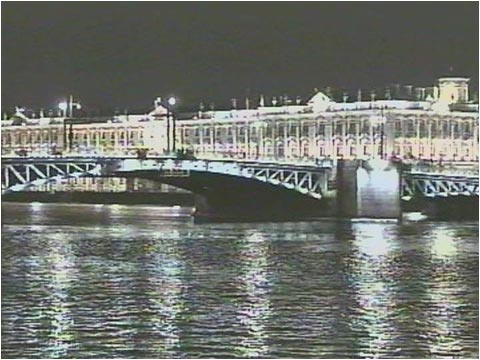Russian Venice - St. Petersburg - will stay afloat for the next 700 years
The legend has it that in days of old nobody was able to build a city on the Neva swamp because the buildings would bog down

Comparing the city of Saint Petersburg to Venice may sound as a compliment. However, this compliment also implies an amount of alarm. Sadly enough, apart from their opulent splendor and beauty of the canals, the “Northern Venice” and the Italian city seem to be under the similar threat of subsidence. St. Petersburg, a city that was founded more than three centuries ago on the marshy banks of the Neva River, has always had to deal with consequences of sitting on the wet and spongy ground. 
The legend has it that in days of old nobody was able to build a city on the Neva swamp because the buildings would bog down. Then an epic hero came around and used his powers to build a city on the bog. The bog could not swallow the city, it was built to last. So the city stays on as times go by. In the meantime, the legend also has some horror part in it with regard to the St. Isaac's Cathedral that is rumored to be sinking in the ground at 3 cm a year. It is just a rumor, but the giant city that reportedly keeps resting on the bog nice and easy is yet another rumor.
Geodesists have been long monitoring the way various parts of this huge city sit on the bog. They keep track on the rate and direction of the surface dislocation therefore they will be the first to raise the alarm should any building in St. Petersburg start sinking. Needless to say, no construction project can go under way without a detailed geodesic study.
There are cast-iron cylinders (wall marks) with triangle staff holders hanging on the ground floor walls of many buildings in St. Petersburg. Those triangle staff holders are called the datum marks. They serve for conducting a geodesic leveling. Their height above the level of the Baltic Sea is well-calculated so they are used as reference points during leveling operations. The datum mark at the Pulkovo observatory was installed at the height of 63.08 m above the sea level. Another datum mark is located in one of the buildings on Maurice Thorez Avenue at 39 m above the sea level. The datum marks at the base of St. Isaac's Cathedral are brand-new, one of them measures 3.3 m above the sea level.
The latest upgrade of geodesic network in St. Petersburg and suburbs took place in the early 1980s. The network includes more than 16 thousand leveling marks. Many a building and facade in the city have undergone through subsidence or reconstruction over the last 20 years. Therefore, the network had to be upgraded. In theory, it needs upgrading every 15 years at the least, but funds were tight to mention since the authorities paid no attention to the situation.
The 2003 festivities on the occasion of 300th anniversary of St. Petersburg had an impact on both the residents and geodesic facilities of the city. For example, 30 leveling marks dating back to 1827 were destroyed during the restoration program in the Nevsky Avenue. A survey conducted from 2000 to February 2005 shows that 340 (14%) out of 4,800 old datum marks were irretrievably lost. On the other hand, in the year 2003 the authorities finally allocated funds for repairing the city datum-mark system. As by plan, 7,736 facilities should be restored. The total amount of funds allocated is 20 million rubles. 14 million rubles have been already spent on the program, a remainder of 6 million rubles to be spent in 2006. The plan also envisages activities for 2007 but it is still unclear whether the program will be implemented to that extent due to uncertainty about financing. More funds need to be allocated to ensure a comprehensive research on the state of ground under the city. The new network will cover an area of 710 square km; it will stretch deeper in the north and east than that of 1982. 
On the basis of data collected in 2003, specialists reached a verdict as to the future of St. Petersburg. They believe that in general the city will be standing firmly in place at least for the next 700 years, no underground catastrophes expected. It is a relief to know that St. Petersburg will live to see its 1000th anniversary. However, specialists expressed concern over the future awaiting a number of historic buildings of the city.
As regards St. Isaac's Cathedral that becomes the source of alarming rumors on a regular basis, the devil is not so black as it is painted. According to data obtained at one of the datum marks, the cathedral have sunk 2 cm over the last 30 years. The other datum mark shows that it went down 2.3 cm. The situation about the Cathedral of the Blessed Virgin of Kazan is much worse. Its left-side foundations have sunk 15 cm over the same period, the middle part sank 8 cm, and the right one went down 5 cm in the ground. The only good news has to do with the period when an intensive sinking took place, it happened from 1974 thorough 1986. The process seems to be gradually slowing down.
The forecast prepared by geodesic service shows that the city of Saint Petersburg will go on living for the next 700 years at least. But specialists keep calling on the authorities to take necessary steps aimed at protecting those strange geodesic marks most people fail to notice in the fuss of their daily lives.
Maxim Vasilenko
Subscribe to Pravda.Ru Telegram channel, Facebook, RSS!

